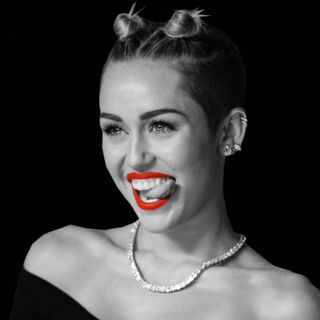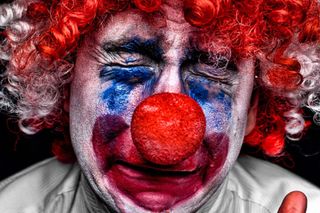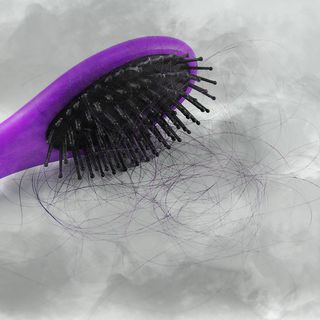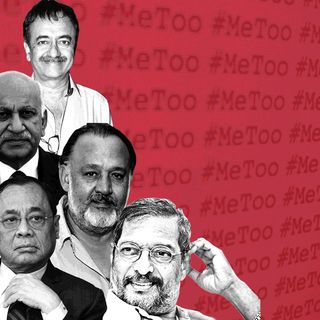
Why People Are So Creeped Out by Clowns, According to Science
They’re smiling … but are they really?

The world has only two kinds of people: those who find clowns creepy and … clowns.
There’s just something so insidious about clowns, and the unease they cause is located right in the gut — an instinct (to run). With mouths carved into artificial smiles and eyes hidden under greasepaint, it’s hard to know what they’re thinking, what they’re feeling. They look happy — but are they really? In fact, why do they look SO happy? It’s almost maniacal as if all it’ll take is … a little push.
Take, for instance, the well-known, second only to Santa Claus — Ronald McDonald, the mascot of the international fast-food franchise loved by adults and especially children. Making a tall clown with flaming red hair, mortician-style facepaint and a nefarious grin, who catches kids alone and hangs out with them (in a yellow jumpsuit fit to clean up a crime scene, no less) the primary mascot — is a bad business decision at best, and just cruel, at worst. (Why does Ronald McDonald wear gloves? What is he trying to avoid getting on his hands?]
I am not alone in this very valid paranoia; Serious Eats calls Ronald McDonald’s former (and worse) avatar “scary”; an ad featuring him gave Huffington Post nightmares and was “quite disturbing,” to Consumerist. In fact, according to a Gawker report, a 2011 survey of TV advertising concluded that a majority of people found him, you guessed it — creepy.
So, what is it? Why are clowns so … *shudders*?
Psychology offers three possible reasons. The first, called “The Uncanny,” has roots going back to Sigmund Freud’s body of work. He was the first to describe “the uncanny” as a reason for fear — as something that is both familiar and unfamiliar, all at once. We intellectually know that clowns are essentially humans — they talk, walk, blink like humans; are (supposedly) humans underneath the paint — but their exaggerated smiles and gestures, bulging eyes, odd-clothing, and pantomime shoes make them … not quite human, too. The resulting cognitive dissonance is at the heart of the unease caused by clowns. “People build rapport based on similarity,” Adam Cox, a phobia specialist, explains to BBC. “Clowns are by definition very different, so this creates a barrier against connection.” The same logic can also be extended to zombies — except you at least know what a zombie wants.
Which brings us to the second possible reason why we find clowns creepy: Psychologist Frank T. McAndrew’s 2016 study with co-author Sara Koehnke, titled “On the Nature of Creepiness,” concludes ambiguity plays a crucial role in determining why we find something creepy. Clowns’ painted faces make it hard to glean their legitimate smiles from their frowns, how they’re feeling, or what they’re thinking. They’re supposed to make us laugh, but we don’t know if they will. A sad, angry clown with an ear-to-ear smile sends mixed signals to our brains, interrupting the established pattern of ‘happy equals a smile and sad equals a frown’ that we’re used to, thus creating the uneasy feeling of being ‘creeped out.’ Alternatively, our brains register a smile as a good, happy, normal thing — but we all know that it’s not normal to smile all the time. If there’s a wide grimace on someone’s face all the time, something’s not right.
The study also found male clowns were more likely to be perceived as creepy than female clowns (checks out, I only imagine male clowns when I’m feeling masochistic at 3:33 a.m. on a Monday morning) and that “unusual or strange physical characteristics such as bulging eyes, a peculiar smile or inordinately long fingers did not, in and of themselves, cause us to perceive someone as creepy, but … can amplify any other creepy tendencies that the person [as clown] might be exhibiting […],” McAndrew writes in The Conversation.
Related on The Swaddle:
What Makes Us Want to Watch Scary Movies?
Some psychologists believe the sinister representation of clowns in popular culture could be the third possible reason why we find them so creepy. It’s a classic case of priming: The monster was cemented in modern popular culture by the murderer John Wayne Gacy Jr., a.k.a. “Pogo, the killer clown,” (because he sometimes dressed as a clown) who confessed to his crimes in the late 1970s, and Pennywise, the clown from Stephen King’s It, which was published in 1989 to terrifying effect. But the phenomenon goes back to nearly a century before, at least to 1892’s Pagliacci, an opera that ends with a clown murdering his wife. Since, pop culture has taken what was implied (that clowns are creepy and possibly dangerous) and explicitly exaggerated it (clowns are murderers and serial killers), again and again. From literature’s Pennywise to DC Comics’ Joker to the movie Killer Clowns from Outer Space to the horrorcore hip-hop group Insane Clown Posse, the trope of the creepy, murderous clown is etched in our subconscious memory as a stimulus that triggers the creeps.
“Fear is influenced partly by our experiences and partly by our observations,” psychiatrist Dr. Robert Gerstman says on American healthcare provider Geisinger’s website. “When people, especially small children, watch media that portrays something as harmful, you can develop a fear. A good example of this is that after seeing Jaws, many people were hesitant to go back in the water — even though they’d never seen a shark attack in real life. They developed a fear of something they’d never experienced. This is the body’s way of avoiding something it thinks could be harmful and is likely why more people are afraid of clowns today than in the past.”
It’s no surprise, then, that in 2016 — the year of the great Clown Scare, complete with mass hysteria about phantom clown sightings in several cities across the globe, especially in the U.S. — 7.8% of Americans self-reportedly suffered from coulrophobia, or, a debilitating fear of clowns. This isn’t plain old getting-spooked-out while watching It; for those who are phobic, clowns can be a trigger for panic attacks, nausea and difficulty breathing.
So, there you have it. Turns out, our brains have just not evolved to deal with the spine-chilling monstrosity that is the clown. (Why do they just stand there, SO STILL?!) It also turns out, knowledge is not always equal to power, since learning the science behind why our brains perceive clowns as creepy doesn’t demystify them one bit. They’re just as … *shudders*.
Pallavi Prasad is The Swaddle's Features Editor. When she isn't fighting for gender justice and being righteous, you can find her dabbling in street and sports photography, reading philosophy, drowning in green tea, and procrastinating on doing the dishes.
Related


Study Links Exposure to Air Pollution to Hair Loss in Humans
